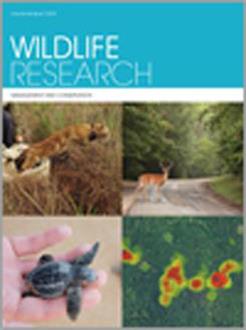Context. Camera trapping is a widely used monitoring tool for a broad range of species across most habitat types. Camera trapping has some major advantages over other trapping methods, such as pitfall traps, because cameras can be left in the field for extended periods of time. However, there is still a need to compare traditional trapping methods with newer techniques.
Aims. To compare trap rates, species richness and community composition of small mammals and reptiles by using passive, unbaited camera traps and pitfall traps.
Methods. We directly compared pitfall trapping (20-L buried buckets) with downward-facing infrared-camera traps (Reconyx) to survey small reptiles and mammals at 16 sites within a forested habitat in south-western Australia. We compared species captured using each method, as well as the costs associated with each.
Key results. Overall, we recorded 228 reptiles, 16 mammals and 1 frog across 640 pitfall trap-nights (38.3 animal captures per 100 trap-nights) compared to 271 reptiles and 265 mammals (for species likely to be captured in pitfall traps) across 2572 camera trap nights (20.8 animal captures per 100 trap-nights). When trap effort is taken into account, camera trapping was only 23% as efficient as pitfall trapping for small reptiles (mostly Scincidae), but was five times more efficient for surveying small mammals (Dasyuridae). Comparing only those species that were likely to be captured in pitfall traps, 13 species were recorded by camera trapping compared with 20 species recorded from pitfall trapping; however, we found significant (P < 0.001) differences in community composition between the methods. In terms of cost efficacy, camera trapping was the more expensive method for our short, 4-month survey when taking the cost of cameras into consideration.
Conclusions. Applicability of camera trapping is dependent on the specific aims of the intended research. Camera trapping is beneficial where community responses to ecosystem disturbance are being tested. Live capture of small reptiles via pitfall trapping allows for positive species identification, morphological assessment, and collection of reference photos to help identify species from camera photos.
Implications. As stand-alone techniques, both survey methods under-represent the available species present in a region. The use of more than one survey method improves the scope of fauna community assessments.





